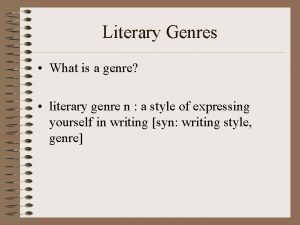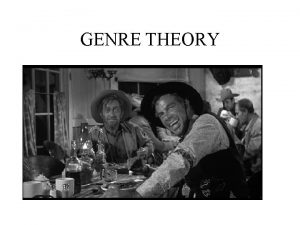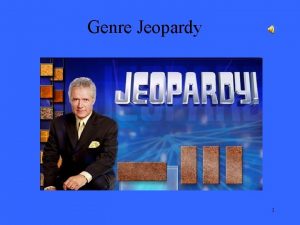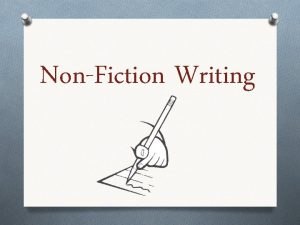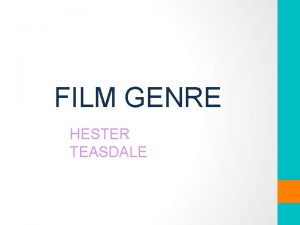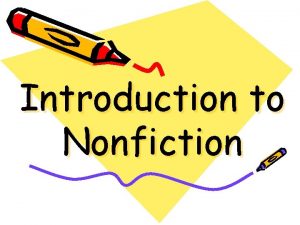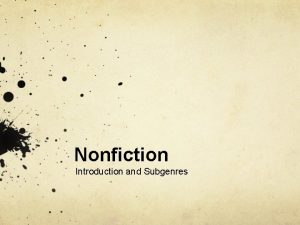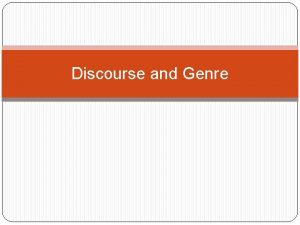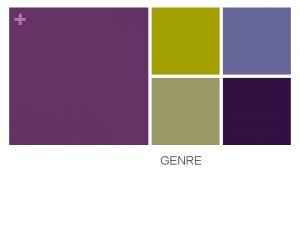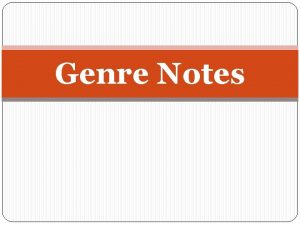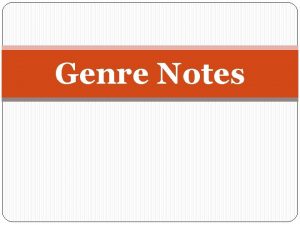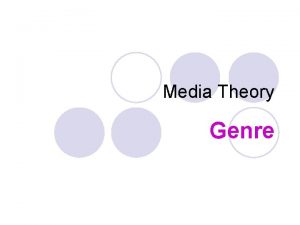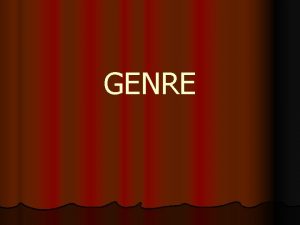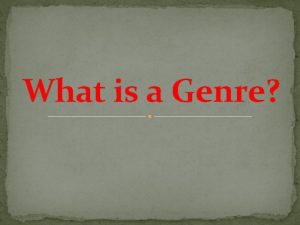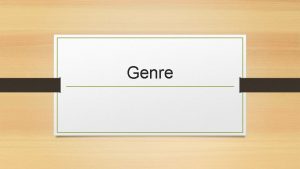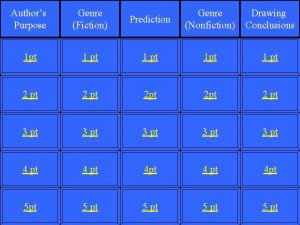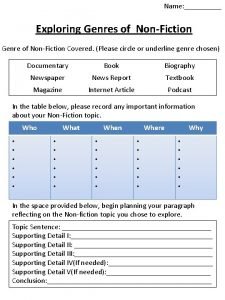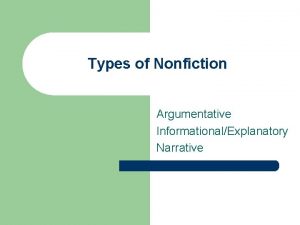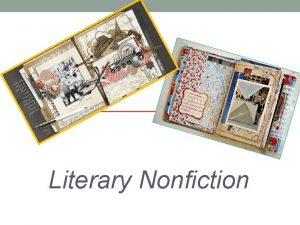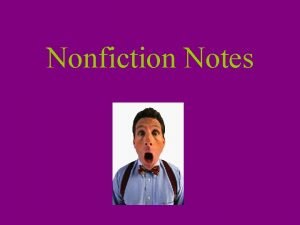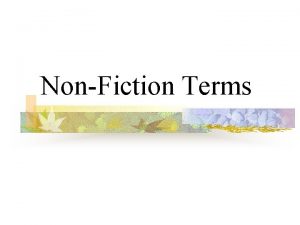NONFICTION An introduction to the nonfiction genre DEFINITION
































- Slides: 32

NONFICTION An introduction to the nonfiction genre

DEFINITION Prose writing About real people, places, & events Written to convey factual information Information may be shaped by author’s purpose and attitude (Bias)

NONFICTION EXAMPLES: Autobiography Biography Memoir Essay Newspaper Journal Editorial Instruction Manual Cookbook

PROSE WRITING Characterized by plain, straightforward statements found in everyday speech written in paragraph form Examples: essays, short stories, and novels

MAIN IDEA A main idea is important information that tells more about the overall idea of a paragraph or section of a text.

SUMMARY A brief statement that presents the main points in a concise form

INFERENCE Making a logical conclusion based on factual evidence

PARAPHRASE A restatement of an expression or a passage; presents the information in different words and often in a different form

AUTHOR’S PURPOSE The author's intent either to inform or teach someone about something, to entertain people, or to persuade or convince their audience to do or not do something

CONTEXT CLUES Information from the reading that identifies a word or phrases

EVIDENCE Data within the text that proves or disproves the author’s claim

REASONING A statement presented in the text that justifies or explains the beliefs or actions of the author

SUBJECTIVE WRITING Expresses an author's feelings or opinions about a particular subject

OBJECTIVE WRITING Impersonal and factual writing

AUDIENCE Type of reader who will read a piece of writing

ACCURACY Presentation of clear and correct facts in a piece of writing.

PROPAGANDA A distortion of the facts in order to influence the way a reader thinks

BIAS A tendency to favor one side of an issue too much based on prejudices

CONNOTATION The associated or secondary meaning of a word or expression in addition to its primary or literal meaning Examples: Home, Spider, Ugly, Skinny Denotation The explicit (dictionary) or direct meanings of a word or expression Examples: House, Untidy, Insect, Slender

DICTION A writer’s choice of words, phrases, sentence structures and figurative language which combine to help create meaning

RHETORICAL QUESTION A question asked that is not intended to be answered Example: Do you want homework this weekend?

QAR: QUESTION, ANSWER, RELATIONSHIP 4 types: Right There Think & Search Author & Me On My Own Knowing what type of question is being asked makes it easier to answer the question!

RIGHT THERE Answer is literally stated in one spot within the reading. Students pick out the answer and copy it word-for-word Minimal thinking required These questions often start with: Who. . . What. . . Where. . . When. . . What kind of. . . How many. . .

THINK &SEARCH Answers are within the reading but not in one spot. Spread across many paragraphs or pages of text Students have to search through the reading and put chunks of text together Questions usually start with: List/Find/Name/Identify two examples. . . For what reasons. . . explain two reasons. . . Retell. . . Summarize. . . What caused. . . How did. . . Contrast/Compare. . .

AUTHOR &ME Answer not literally found within the text Students need to think about how the text and what they already know fit together Students must: pull from background knowledge Make connections Cite evidence from the reading Questions often include wording such as: Cite evidence. . . Explain/Support your thinking What word means the same. . . What MOST LIKELY. . . Which BEST. . .

OWN MY OWN Student responses are based on personal opinions and background knowledge ONLY Answers are “all about me” & “my thinking” No reference to a reading passage

TEXT FEATURES Parts of your textbook that have been created to help you locate and learn information. Used in designing and organizing the pages of your textbook. Title page & table of contents found at the beginning of books Headings, graphics, main idea boxes, and bolded words found in the middle of book Reference pages like glossaries, indexes, and atlases found at the end of your book

WHY SHOULD I LOOK AT TEXT FEATURES? Will help you know what is most important in a lesson and help you locate information quickly Looking at the titles in the table of contents or on a page can quickly tell you what information you will learn about. Reference pages such as the glossary can help you find out more about a certain topic or word.

TEXT FEATURES THAT HELP WITH UNDERSTANDING: Title, Author, Illustrator Table of Contents Chapter Introductions Chapter Summaries Pre & Post Reading Questions Appendix Glossary Chapter Titles Special Type within text (Bold, Italics, Underline, All Caps) Graphics Captions Labels Illustrations/Photographs Footnotes Fact Boxes

TEXT FEATURES THAT HELP WITH VOCABULARY: Glossary Special type: bold, italics, underline, all caps Footnotes Vocabulary Boxes Pronunciations

TEXT FEATURES THAT HELP WITH MAIN IDEA & TOPICS Table of Contents Headings Index Pre & Post Questions Chapter Titles Subheadings Fact Boxes

TEXT FEATURES THAT HELP WITH FINDING DATA AND PLACES: Maps Atlas Charts Tables Diagrams Timelines Graphs Charts
 N'to genre
N'to genre What is genre
What is genre What is chandler's typology of genre codes
What is chandler's typology of genre codes Hát kết hợp bộ gõ cơ thể
Hát kết hợp bộ gõ cơ thể Bổ thể
Bổ thể Tỉ lệ cơ thể trẻ em
Tỉ lệ cơ thể trẻ em Voi kéo gỗ như thế nào
Voi kéo gỗ như thế nào Glasgow thang điểm
Glasgow thang điểm Chúa yêu trần thế
Chúa yêu trần thế Các môn thể thao bắt đầu bằng từ đua
Các môn thể thao bắt đầu bằng từ đua Thế nào là hệ số cao nhất
Thế nào là hệ số cao nhất Các châu lục và đại dương trên thế giới
Các châu lục và đại dương trên thế giới Công thức tính thế năng
Công thức tính thế năng Trời xanh đây là của chúng ta thể thơ
Trời xanh đây là của chúng ta thể thơ Cách giải mật thư tọa độ
Cách giải mật thư tọa độ Làm thế nào để 102-1=99
Làm thế nào để 102-1=99 độ dài liên kết
độ dài liên kết Các châu lục và đại dương trên thế giới
Các châu lục và đại dương trên thế giới Thơ thất ngôn tứ tuyệt đường luật
Thơ thất ngôn tứ tuyệt đường luật Quá trình desamine hóa có thể tạo ra
Quá trình desamine hóa có thể tạo ra Một số thể thơ truyền thống
Một số thể thơ truyền thống Bàn tay mà dây bẩn
Bàn tay mà dây bẩn Vẽ hình chiếu vuông góc của vật thể sau
Vẽ hình chiếu vuông góc của vật thể sau Nguyên nhân của sự mỏi cơ sinh 8
Nguyên nhân của sự mỏi cơ sinh 8 đặc điểm cơ thể của người tối cổ
đặc điểm cơ thể của người tối cổ Ví dụ về giọng cùng tên
Ví dụ về giọng cùng tên Vẽ hình chiếu đứng bằng cạnh của vật thể
Vẽ hình chiếu đứng bằng cạnh của vật thể Phối cảnh
Phối cảnh Thẻ vin
Thẻ vin đại từ thay thế
đại từ thay thế điện thế nghỉ
điện thế nghỉ Tư thế ngồi viết
Tư thế ngồi viết

